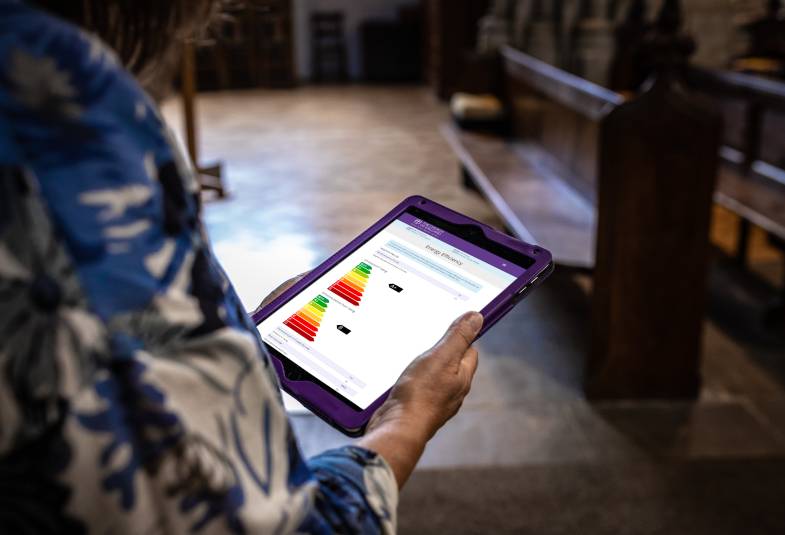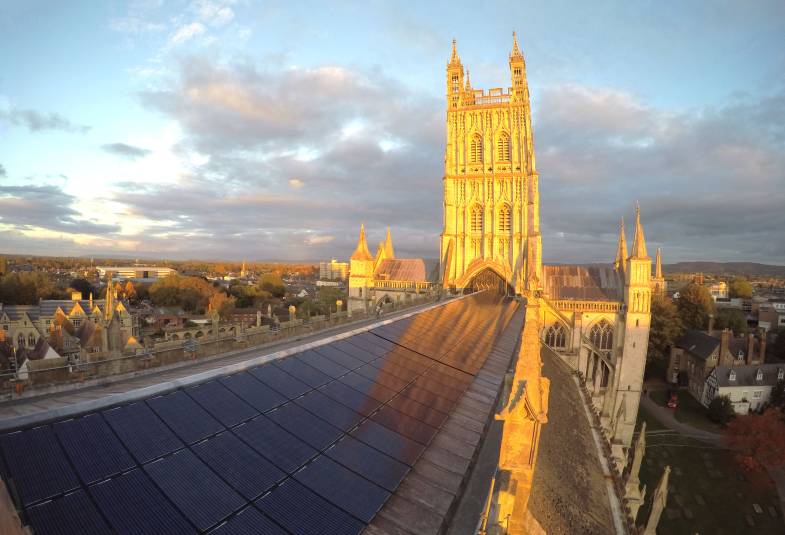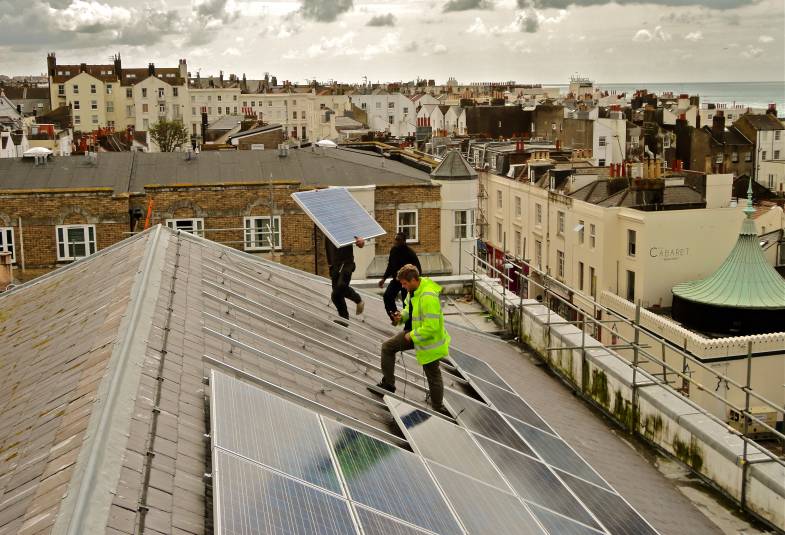12/02/2021

The Energy Footprint Tool (EFT) tool is a simple dashboard which has been piloted by churches keen to reduce their carbon footprint.
Data in the report reveal:
- Nearly 5,000 churches submitted data.
- Five per cent of churches sampled were already net-zero carbon.
- A 12.5 per cent carbon reduction has already been made across the country, when compared with a comparative, although smaller, 2006 study.
- The estimated total net carbon footprint for the Church of England’s church buildings (based on energy use alone) is around 185,000 tonnes of greenhouse gases, measured in tonnes of carbon dioxide equivalent or tCO2e.
The tool, launched in January 2020, provides advice to parishes who have entered their data about how to take further steps and an appliance-style energy rating showing how the church compares to others of a similar size.
The report suggests there is still significant scope for churches to install cleaner technologies to reduce their carbon impacts with just one per cent of churches presently having installed solar panels. The study also found that if all churches switched to a renewable electricity tariff, the estimated total net carbon footprint for church buildings would be 22 per cent smaller.
The lead bishop for the environment, Nicholas Holtam, the Bishop of Salisbury welcomed the commitment shown by churches across England who have used the tool.
He said: “Committing the Church of England to become net-zero by 2030 has emphasised the urgency of the climate crisis. It has inspired us all to pick up the pace in the care of God’s creation.
“There has been a magnificent response already, but it is sobering to realise how much more is needed. The Energy Footprint Tool, good advice and some excellent case studies are available to stimulate, encourage and help.
“We need to be working at this in every Church community – churches, chaplaincies, schools, homes and offices - as we move towards our 2030 target for the sake of the world God loves.”

On 12 February 2020, a year ago today, the General Synod committed the Church to reducing carbon emissions to net-zero by 2030.
A detailed definition of net-zero was then finalised in the autumn following a major consultation with dioceses and cathedrals. This included encouragement for the network of Church schools, including some in scope where the Board of Education has sufficient influence, such as Voluntary Aided (VA) and Academy schools.
Now, a Church of England primary school in Gloucestershire, will become one of the first net-zero carbon schools in the country.
St Andrew’s CofE (VA) Primary School in Chedworth has been awarded a £120,000 as part of the Government’s Public Sector Decarbonisation Scheme. The money is being used to convert all lighting to LED units, install motion sensors, insulation for ceilings, floors and walls, and double-glazing for the windows.
The school also plans to add solar panels on the roof and replace an old oil-fired boiler with an air source heat pump (ASHP).
Headteacher, Mrs Nikita Smith, said she had been inspired by the steps taken by the school.
“Here at St Andrew’s Church of England school we show children that all can contribute towards change – and that change can happen on their doorstep,” she said.
“A lot of our curriculum content covers the climate crisis and the damage to our environment in the world, but our school’s effort makes these topics accessible to every pupil.
“It is vital that we teach children that what they do matters, whether this be in their actions towards our planet, or actions towards each other.
“We recycle everything from glue sticks to clothes and this larger scale project will help children understand how renewable energy works.
“Already, the preliminary work has created a lot of excitement among key worker children and led to lots of questions.”
Energy consultant, Matt Fulford, who is working with the school, said: “Despite lockdown, works are ongoing, so the changes will be visible to pupils when they all return. This will hopefully inspire the children to become powerful messengers about acting now for the benefit of their future.”
“There is a clear demand and need for funds like the Government’s grants to reduce carbon emissions.”

This year it was also announced that Hereford Cathedral would be the environment charity A Rocha’s 1000th 'Eco Church' joining hundreds of other places of worship making significant carbon reductions.
Churches are facilitated in their efforts by the Church of England’s Parish Buying service which negotiates contracts and discounts for parishes.
Nicolas Jenni of Parish Buying said: “We are proud to be supporting churches in achieving their Net Zero Carbon 2030 goal. Parish Buying makes available 200 subsidised energy audits for churches every year to help them identify opportunities for saving energy and reducing carbon emissions.
“This year we are piloting eight solutions designed to help churches achieve Net Zero including Solar PV systems and electric pew heaters.
“And more ideas will also be made available through a catalogue of goods providing a range of lower cost items such as data loggers and Point of Use water heaters.”
More information
- The EFT is part of the Parish Returns system, which parishes already log in to every year to submit attendance and financial data.
- Read more about the Church of England's Environment work.